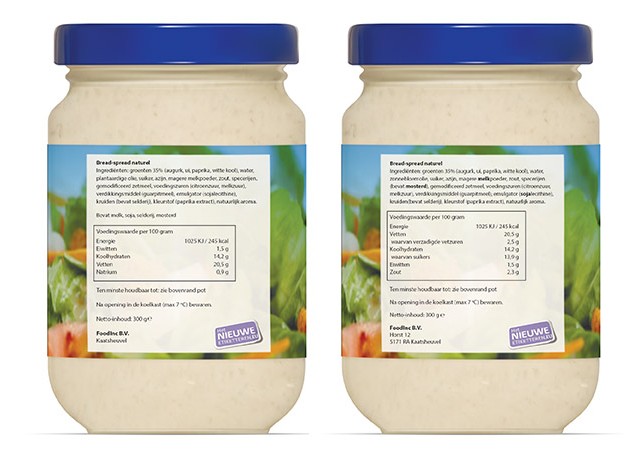
The transition period lasts until 13 December 2014, and from 14 December it will be mandatory for all foods sold in the European Union to comply with Regulation (EU) No. 1169/2011. Unfortunately for marketing departments, things could get a little cramped on the label.
Informally, the Regulation (EU) No. 1169/2011 is being called the ‘new labelling law’. As a result, it would be easy to lose sight of the reason for reforming the current Directive 2000/13 on labelling and the decree on the labelling of foodstuffs (Warenwetbesluit Etikettering van levensmiddelen) into a single, new law. “Essentially it is about informing consumers more clearly and in accordance with the new agreements,” says Karen Baten, coordinator of the LabelCompliance department within KTBA. KTBA LabelCompliance helps food professionals to label their products correctly in line with national and international legislation.
’How are we supposed to fit all the mandatory information onto just one label?’
“One of the most frequently asked questions is, ‘How are we supposed to fit all the mandatory information onto just one label?’” continues Karen. “Manufacturers are reluctant or even unable to increase the size of the label; after all, that could detract from the appeal of the product or its packaging. Hence, we’re often asked if it’s permitted to work with a ‘peel-off’ system. Unfortunately, it’s not possible to give a standard answer to what’s allowed and what isn’t: it depends on the size of the packaging. It’s the surface area of the largest side the pack that determines the amount of information required, not the size of your label!”
There are also lots of questions about how to comply with the legal requirements in practice. Karen: “For instance, the Regulation states that allergens must be listed ‘in a distinguishing typeset’. But what is meant by ‘distinguishing’? Is it sufficient to print them in bold type, should they be in a different colour, or underlined? Industry associations in The Netherlands and across Europe who are advising their members on how to implement the requirements are advocating that the ingredients should be printed in bold type. Proposals have been drafted regarding the best way to emphasise allergens when it comes to naming the allergens in an ingredient, so that it is always clear to consumers if the product contains an allergenic substance. The nutrition declaration and the mandatory information about seven values must follow a fixed sequence: energy; fat, of which saturated fatty acids; carbohydrates, of which sugars; protein; and salt.”
Various other things are still unclear too. Intense discussions are currently ongoing at European level about the origin labelling of ‘meat as an ingredient’ (see elsewhere in this edition), and there are questions about listing cross-contamination when no thresholds have (so far) been set. “Manufacturers can access a system called Vital Grid: Voluntary Incidental Trace Allergen Labelling. This tool enables them to calculate the level of a certain allergen that will pose a risk to people with the relevant allergy, which can help them to determine whether it is necessary to list cross-contamination. The starting point should always be a risk-based approach, but it is also important to avoid including warnings unnecessarily.”
Source: Het nieuwe etiketteren